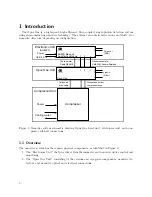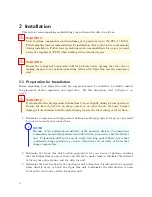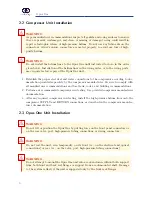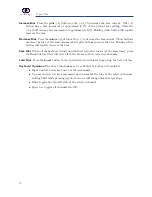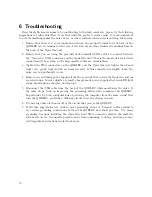
6 Troubleshooting
If electrical glitch-noise seems to be contributing to the dark count rate, please try the following
suggestions to reduce this effect. Note that while the goal is to reduce noise, it is also important
to note if something makes the noise worse, as it may indicate where noise is entering the system.
1. Ensure that there is a good connection between the ground terminal on the back of the
QOELEC (screw terminal on the rear of the system) and the stainless steel helium lines on
the back of the Opus One unit.
2. Ensure that you are using the provided double-shielded SMA cables to connect between
the “Nanowire” SMA connector and the Opus One unit. This is the most critical electrical
connection in the system, so the high-quality cables are essential here.
3. Tighten the SMA connectors on the QOELEC and the Opus One just tighter than hand-
tight (very gently tighten with an 8-mm wrench). If this connection is slightly loose, the
noise can be significantly worse.
4. Remove any switching power supplies from the ac circuit that powers the Opus One system
and electronics. Major culprits are small, cheaply made power supplies that run LED light
strips, mobile-phone chargers, and laptops.
5. Disconnect the USB cable from the back of the QOELEC while monitoring the noise. If
the noise drops, work on improving the grounding between the computer and QOELEC.
In particular try both configurations of powering the computer from the same circuit that
runs the QOELEC, and from a different circuit to see the change in noise.
6. Try moving other electronics off of the circuit that powers the QOELEC.
7. If all other suggestions fail: work to move grounding straps or “banana” cables around to
try various grounding connections between the QOELEC and the Opus One. Try many
grounding locations including the Opus One front SMA connector shields, the shelf the
system sits on, etc. Ground-loop issues can be time-consuming to debug, but doing so may
yield significant reductions in electrical noise.
20

